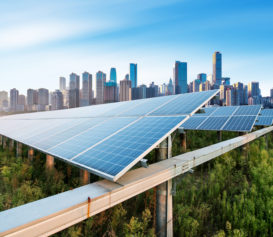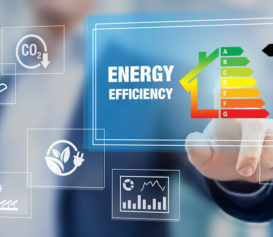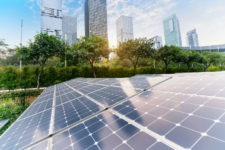While many properties in NYC have to carve their own path to LL97 compliance, others have specific requirements to follow. In this post, we’re breaking down requirements & sharing Local Law 97 resources for residential properties – specifically affordable and rent-regulated housing.
If this doesn’t apply to your portfolio, don’t worry! We’ve got tons of resources on Local Law 97, including our most recent Local Law 97 webinar with Cadence OneFive’s Marc Zuluaga.
Of course, we’ll keep you posted on the latest changes and updates. One recent update: the DOB’s service notice about how the first few LL97 reports should be filed based on property types in ESPM or the NYC Building Code.
Read on to find out if your properties need to adhere to certain pathways, and what your next steps should be.
Pathways To Compliance
In general, Local Law 97 is applicable to covered buildings (generally 25,000 sq. ft. and over, plus some other categories, with some exceptions; check your SiteCompli account to see if your building is on the list).
From there, HPD put together three pathways for different types of properties with affordable housing. They also put together a handy flowchart outlining which properties need to follow which paths – each with different requirements and due dates. If different properties in your portfolio fall into different paths, make sure you plan your Local Law 97 efforts accordingly.
You can view HPD’s flowchart here to determine if your building falls into one of the three categories. You can also check out HPD’s FAQ document reviewing the different paths here, or send questions to GHGEmissions@buildings.nyc.gov if you’re not sure about how your property should comply.
The Prescriptive List
The Prescriptive Pathway is an option for a specific set of affordable housing, as outlined in the flowchart. Properties can either not exceed their set emission limits, or follow the Pathway to comply. Per HPD:
The Prescriptive Pathway requires buildings owners to make certain energy conservation measures by December 31, 2024. These measures can be found here, and include upgrading lighting, weatherization, and air sealing.
Here’s the full list, as laid out in the law above and on HPD’s site:
- Adjusting temperature set points for heat and hot water to reflect appropriate space occupancy and facility requirements.
- Repairing all heating system leaks.
- Maintaining the building’s heating system, including but not limited to ensuring that system component parts are clean and in good operating condition.
- Installing individual temperature controls or insulated radiator enclosures with temperature controls on all radiators.
- Insulating all pipes for heating and/or hot water.
- Insulating the steam system condensate tank or water tank.
- Installing indoor and outdoor heating system sensors and boiler controls to allow for proper set-points.
- Replacing or repairing all steam traps such that all are in working order.
- Installing or upgrading steam system master venting at the ends of mains, large horizontal pipes, and tops of risers, vertical pipes branching off a main.
- Upgrading lighting to comply with the standards for new systems set forth in section 805 of the New York city energy conservation code and/or applicable standards referenced in such energy code on or prior to December 31, 2024.
- Weatherizing and air sealing where appropriate, including windows and ductwork, with focus on whole-building insulation.
- Installing timers on exhaust fans.
- Installing radiant barriers behind all radiators.
Taking Action
You’re on the covered buildings list, and you fall into one of the above groups. What’s next?
If you have questions, we recommend you contact a sustainability/LL97 expert. We’re happy to recommend teams in the industry like Cadence OneFive, who can help you determine the best course of action for your properties. Experts can also help you maximize financial incentives, like NYSERDA programs and more.
You can also reach out to Kinetic Communities Consulting Corporation (KC3), an affiliate of the NYC Accelerator. They’re providing free technical assistance to building owners of affordable housing, and can be reached at affordable@kc3.nyc.
Of course, stay tuned to the blog – we’ll be keeping track of the latest updates and changes before the first due dates in 2024.




